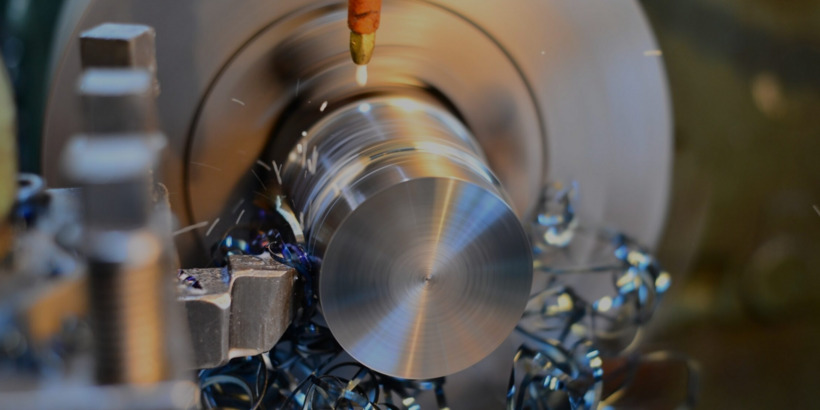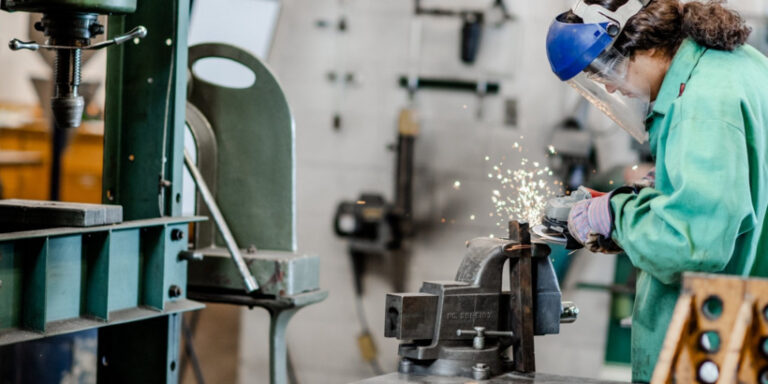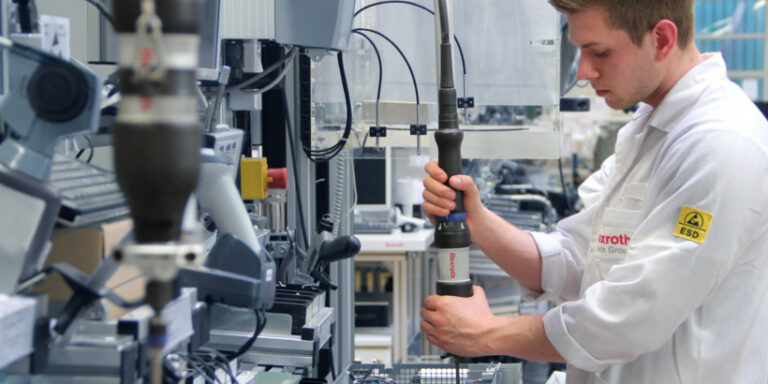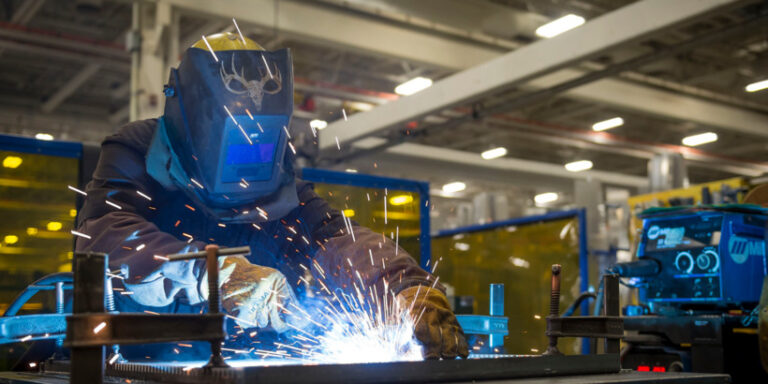The Role Of Mechanical Engineers In The Development Of Sustainable Agriculture
As a mechanical engineer, I have always been fascinated by the role of technology in agriculture. We live in an age where the world population is growing at an unprecedented rate and there is a need for sustainable agricultural practices to feed this expanding population.
Mechanical engineers play a crucial role in developing technologies that can help farmers increase their productivity while minimizing environmental impact. The field of sustainable agriculture has gained increasing attention over recent years as people become more aware of the negative impacts conventional farming practices can have on our environment.
Sustainable agriculture aims to produce food while preserving natural resources such as water and soil quality, biodiversity, and energy efficiency. Mechanical engineers are involved in creating innovative solutions for sustainable agriculture through designing precision irrigation systems, efficient crop harvesting equipment, automated planting machines, and other technological advancements that enhance crop production with minimal harm to the environment.
In this article, we will discuss the various ways mechanical engineers contribute to the development of sustainable agriculture and how their work helps ensure a better future for us all.
Precision Irrigation Systems
Did you know that agriculture accounts for 70% of global freshwater use?
As a mechanical engineer, I am passionate about finding solutions to this problem.
Precision irrigation systems are one way we can conserve water while also improving crop monitoring.
By using sensors and advanced algorithms, these systems only distribute the necessary amount of water to crops based on their specific needs.
This not only saves water but also prevents over-watering which can harm plant growth.
With precision irrigation systems, farmers can ensure optimal crop health while reducing water waste – truly making sustainable agriculture possible.
Efficient Crop Harvesting Equipment
I’m really interested in the design of crop harvesting equipment because I think it’s a crucial factor in making sure our agricultural systems are sustainable. Automation of crop harvesting is also an important area to consider, as it could help maximize efficiency and reduce labor costs. Finally, cost-effectiveness is essential for this equipment to be widely adopted, so I’m curious to see how engineers are going to tackle this challenge.
Design Of Equipment
I’ve always been fascinated by how engineers can design equipment that maximizes the efficiency of crop harvesting.
One important aspect to consider is no till farming, which involves leaving plant residue on the soil surface instead of tilling it under.
This method reduces erosion and preserves moisture in the soil, resulting in better water conservation.
Mechanical engineers play a vital role in designing equipment that works well with this technique, such as no-till drills or seeders that create minimal disturbance while planting seeds.
By incorporating sustainability practices like this into their designs, mechanical engineers are helping farmers achieve more efficient and environmentally friendly agricultural practices.
Automation Of Crop Harvesting
Now, let’s talk about another fascinating aspect of efficient crop harvesting equipment that I find intriguing – the integration of robotics and predictive analytics.
As a mechanical engineer, it’s exciting to see how technology is revolutionizing the agricultural industry.
Integrated robotics can perform tasks like crop monitoring, planting, and harvesting with high accuracy and efficiency.
With predictive analytics, farmers can make informed decisions based on data-driven insights from weather patterns, soil conditions, and plant growth rates.
By designing equipment that incorporates these technologies, mechanical engineers are helping farmers optimize their yields while reducing labor costs and increasing sustainability in agriculture.
Cost-Effectiveness
So, we’ve talked about how robotics and predictive analytics are improving the efficiency of crop harvesting equipment.
Now, let’s shift our focus to another critical aspect – cost-effectiveness.
As a mechanical engineer passionate about sustainable agriculture, I believe that efficient crop harvesting should not only be productive but also economical by reducing waste and minimizing costs.
By designing machines with features like automatic yield mapping and real-time monitoring, farmers can identify areas where they’re losing crops or overusing resources. This data helps reduce waste while simultaneously increasing yields at lower costs.
Moreover, incorporating technologies such as GPS guidance systems in harvesters ensures more precise cutting and reduces unnecessary fuel consumption.
It’s fascinating to see how these innovations are shaping the future of farming!
Automated Planting Machines
When it comes to sustainable agriculture, automated planting machines have become game-changers in the industry.
As a mechanical engineer, I am proud to say that our innovations are helping farmers increase productivity and efficiency while reducing costs and environmental impact.
These machines not only speed up the planting process but also ensure accuracy in seed placement, resulting in optimal plant growth.
In addition, they can be integrated with aeroponic systems or used in vertical farming, allowing for more precise control over growing conditions such as temperature, light exposure, and nutrient levels.
With these advancements, we are paving the way towards a more sustainable future for agriculture.
Reducing Impact On Soil Quality
I’m interested in discussing the role of mechanical engineers in the development of sustainable agriculture, particularly when it comes to reducing impact on soil quality. I’d like to focus on soil conservation techniques, the use of sustainable machinery, and improved irrigation systems. Let’s talk about how mechanical engineers can help bring about these solutions!
Soil Conservation Techniques
As a mechanical engineer who is passionate about sustainable agriculture, I believe that one of the most critical aspects of reducing impact on soil quality is implementing effective soil conservation techniques.
Climate adaptation and pest control are two significant factors that can negatively affect soil health if not addressed properly.
By utilizing methods such as cover cropping, crop rotation, and reduced tillage, we can protect our soils from erosion and compaction while also improving their water-holding capacity and nutrient content.
These practices promote healthier plant growth, which ultimately results in higher yields for farmers.
Implementing these techniques may require changes to current farming practices, but it’s essential to prioritize long-term sustainability over short-term gains.
Use Of Sustainable Machinery
Now, another effective way of reducing the impact on soil quality is through the use of sustainable machinery.
As a mechanical engineer who is passionate about sustainable agriculture, I believe that utilizing equipment designed to minimize soil compaction and erosion can significantly improve soil fertility and water conservation.
Sustainable machinery such as precision planters or strip-till machines can help farmers reduce tillage while maintaining crop yields.
Furthermore, electric tractors and other battery-powered farm equipment are becoming more prevalent, providing an eco-friendly alternative to traditional gas-guzzling vehicles.
By incorporating these sustainable practices into farming operations, we can protect our soils from unnecessary harm while also promoting long-term sustainability for future generations.
Improved Irrigation Systems
Now, while sustainable machinery can certainly make a big difference in reducing soil compaction and erosion, there are other ways we can improve irrigation systems to further minimize the impact on soil quality.
As someone who has worked closely with farmers, I have seen firsthand how smart watering techniques can greatly benefit crops without causing harm to the soil.
By using advanced sensors and software for soil monitoring, farmers can better understand their land’s moisture levels and tailor their irrigation accordingly.
This not only helps conserve water but also prevents overwatering, which can lead to nutrient leaching and root damage.
With improved irrigation systems like these, we can continue to promote healthy soils that support thriving ecosystems long into the future.
Enhancing Biodiversity
As mechanical engineers, we have an opportunity to enhance biodiversity in agriculture by implementing sustainable practices. Soil enrichment is a crucial aspect of this process as it promotes the growth of plants and creates a healthy ecosystem for organisms living within it.
By using techniques such as crop rotation, cover crops, and composting, we can improve soil health and increase biodiversity.
Water conservation also plays a vital role in enhancing biodiversity. Drought-resistant crops, such as millet or sorghum, require less water than traditional crops like rice or wheat. Additionally, irrigation systems that use precision technology can reduce waste and ensure water goes where it is most needed.
Overall, our work as mechanical engineers has a significant impact on the sustainability of agriculture. By promoting soil enrichment and water conservation practices, we are creating healthier ecosystems for both crops and wildlife to thrive in.
Increasing Energy Efficiency
Now that we understand how enhancing biodiversity is crucial for sustainable agriculture, let’s dive into the role of mechanical engineers in increasing energy efficiency.
As a mechanical engineer myself, I believe that one way to achieve this goal is through the development and implementation of smart sensors. These sensors can be used to monitor various aspects of agricultural production such as soil moisture levels, temperature, and light intensity. By gathering data on these variables, farmers can optimize their use of resources like water and electricity, ultimately reducing waste and improving energy efficiency.
Another area where mechanical engineers can contribute to sustainable agriculture is through the design of eco-friendly packaging solutions. Sustainable packaging not only reduces waste but also helps preserve the quality and freshness of food products. For example, biodegradable containers made from plant-based materials are becoming increasingly popular as an alternative to traditional plastic packaging.
Mechanical engineers can help develop new packaging materials or improve existing ones by considering factors such as durability, recyclability, and carbon footprint.
In summary, there are many ways in which mechanical engineers can contribute to sustainable agriculture, including through the use of smart sensors and the design of sustainable packaging solutions. With our expertise in mechanics and technology, we have a unique opportunity to make a significant impact on this important global issue.
Utilizing Renewable Energy Sources
Nowadays, we are all aware of the importance of renewable energy sources. As a mechanical engineer contributing to sustainable agriculture, I strongly believe that utilizing such sources is crucial in achieving our goals.
Solar panels and wind turbines are just two examples of how we can harness clean energy from nature. By incorporating these technologies into agricultural practices, we can reduce carbon emissions and save money on electricity bills. Not only do they provide a cost-effective solution, but also offer an opportunity for farmers to become more self-sufficient when it comes to their energy needs.
With advancements in technology and research constantly being made, the future looks promising for the use of renewable energy in agriculture.
4 ways we can incorporate renewable energy sources into sustainable agriculture:
- Installing solar panels on farms: This helps generate power while reducing greenhouse gas emissions.
- Utilizing wind turbines: Windmills have been used since ancient times to pump water or grind grain, but now modernized versions can produce enough electrical energy to run entire operations.
- Implementing biogas systems: These convert animal waste into methane gas which then fuels generators for electricity production.
- Using hydroelectricity: In areas with access to flowing water, small-scale hydropower systems can be utilized as a source of clean electricity generation.
As engineers working towards sustainability in agriculture, it’s important to keep exploring new ways to implement renewable energies effectively and efficiently. Through collaboration between experts across different fields, we can achieve significant progress towards creating a better tomorrow without compromising our planet’s resources or jeopardizing food security for future generations.
Conclusion
As a mechanical engineer, I am proud to say that our industry is playing an essential role in the development of sustainable agriculture.
With precision irrigation systems, efficient crop harvesting equipment, and automated planting machines, we are helping farmers reduce water usage while increasing yield production.
Our focus on reducing impact on soil quality is another way that we can help ensure that future generations have access to healthy food sources.
Moreover, enhancing biodiversity by designing new machinery and processes for farming operations will lead to more resilient ecosystems capable of adapting to climate change effects.
By increasing energy efficiency and utilizing renewable energy sources in their operations, farmers can also contribute to mitigating global warming issues.
In conclusion, as mechanical engineers continue developing innovative solutions for sustainable agriculture practices by working closely with agriculturalists and environmental scientists and policymakers alike, they play a critical role in shaping the future of food production worldwide.
It’s heartening to see how much progress has been made so far towards creating more environmentally friendly agriculture practices, but there’s still plenty of work ahead of us.






